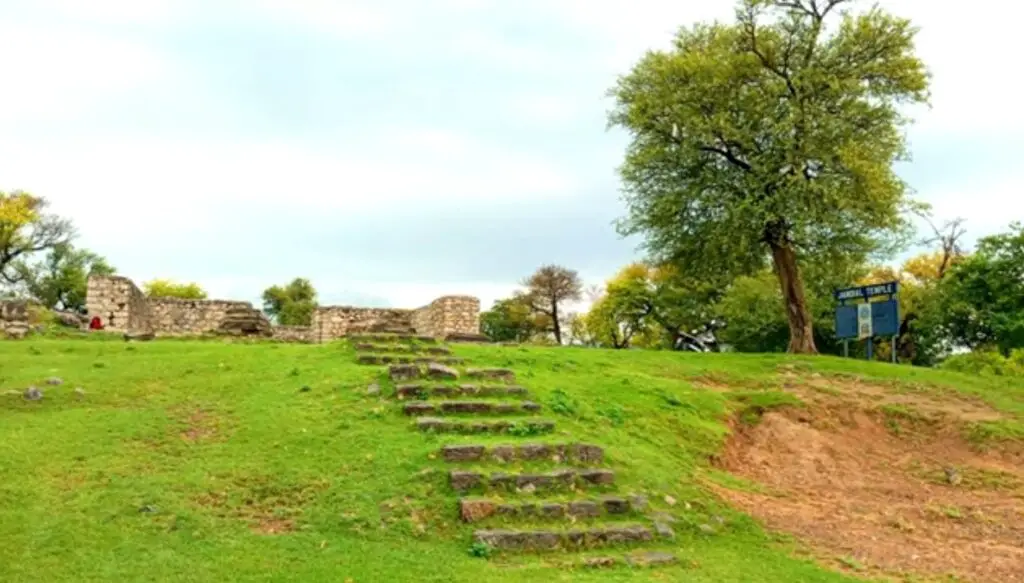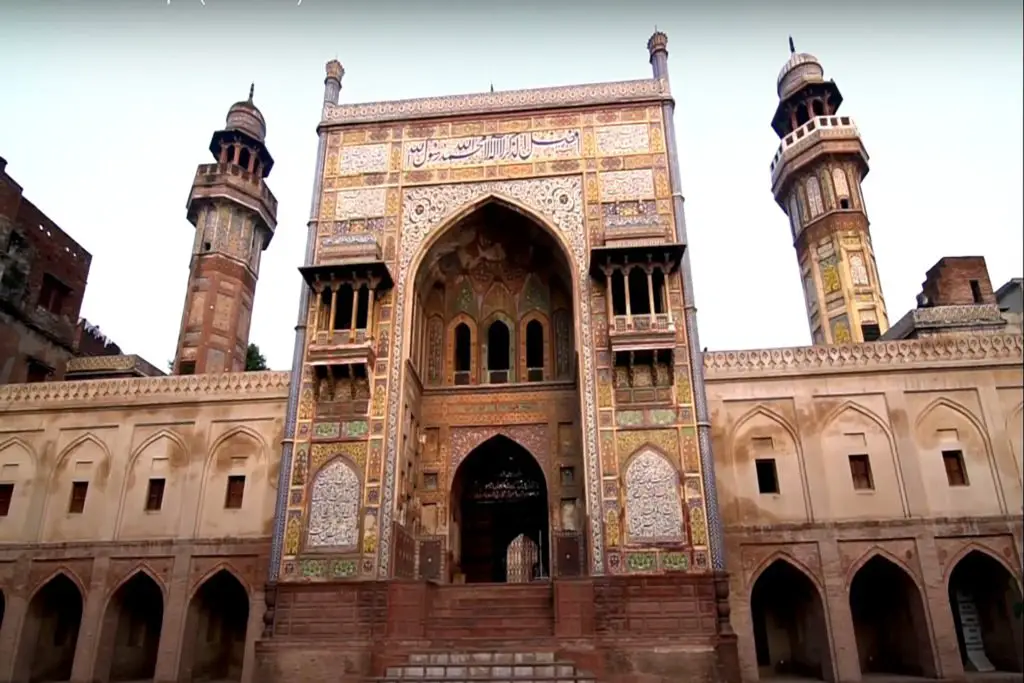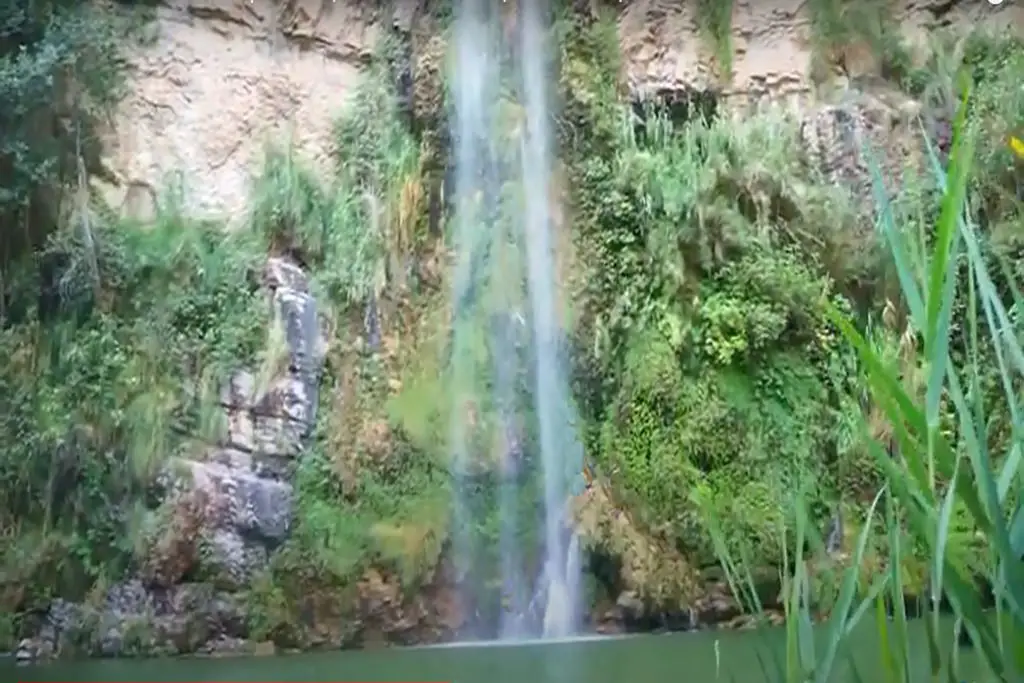Jandial Temple is a remarkable archaeological site situated near Taxila, in the northern region of Pakistan. The temple is believed to have been built in the 2nd century BC during the era of the Indo-Greek kings, and it is considered one of the oldest surviving structures in the region.
The Jandial Temple’s archaeological significance has been recognized by UNESCO, which has declared the nearby Taxila Valley a World Heritage Site. The valley is home to several ancient Buddhist and Hindu sites, including the Jaulian and Mohra Moradu stupas, the Dharmarajika and Julian Monasteries, and the Sirkap and Sirsukh archaeological sites.
Jandial Temple History
The Taxila Valley was a center of Buddhist learning, attracting scholars and monks from all over the world. The famous Chinese traveler and scholar, Xuanzang, visited the region in the 7th century AD and documented its rich cultural heritage. The region’s prosperity declined after the decline of the Indo-Greek empire and the invasions of the Huns and other nomadic tribes in the 5th century AD.
The Jandial Temple, an ancient place of worship nestled near the historic city of Taxila, stands as a testament to the Buddhist heritage of the region. Perched upon a hill, this sacred site is accessible through a series of intricately carved stone steps. Positioned in front of the Sirkap city, the temple’s elevated location offers panoramic views from its 45-foot hilltop.
Erected by Greek hands, this temple showcases remarkable features. The steps leading to its entrance bear the hallmark of Greek craftsmanship, adorned with the exquisite detailing that exemplifies their architectural prowess. The temple, measuring an impressive 158 feet in length and 85 feet in width, is a prime example of the synthesis of Greek design and Buddhist reverence.
The excavation endeavors of 1912 and 1913, led by Mr. Ghulam Qadir under the guidance of Sir John Marshall, brought to light the historical significance of the Jandial Temple. This sacred space stands as a silent witness to the passage of time, holding within its walls the echo of ancient rituals and devotion.
Though the temple’s grandeur has faded over the ages, its importance remains steadfast. Designated as a UNESCO World Heritage Site in 1980, the temple complex is situated a mere half kilometer away from the Sirkap city ruins. It rests upon four substantial pillars and two smaller ones, forming the foundation of a structure that once housed a grand hall and a prayer room. The temple’s intricate design, with windows and staircases facilitating airflow, showcases the fusion of Greek architectural elements with Buddhist reverence.
As one explores the temple’s perimeter, a pathway, spanning 12 to 14 feet in width, encircles the sacred edifice. This encompassing path allows for a deeper connection to the temple’s sanctity, inviting visitors to circumambulate and reflect.
While the temple’s ceilings have succumbed to the passage of time, leaving only its walls standing, the remains of an upper story offer glimpses into the temple’s past glory. The Jandial Temple stands as a bridge between epochs, connecting modern admirers to the ancient devotion that once filled its halls.
Pictures Gallery – Jandial Temple













Location of Jandial Temple Taxila
The Jandial Temple is situated on a rocky outcrop, overlooking the nearby Haro River. It is a square-shaped structure, built entirely of stone, with an open courtyard in the center. The temple is dedicated to the Hindu deity Shiva, as evident from the carvings and sculptures found within the complex.
The temple’s architecture is an excellent example of the Indo-Greek style, with its characteristic features of a stepped plinth, a columned porch, and a central cella or sanctum. The walls of the temple are adorned with intricate carvings, depicting scenes from Hindu mythology, including the various forms of Shiva, such as Nataraja, the lord of the dance, and Ardhanarishvara, the composite form of Shiva and his consort Parvati.
Jandial Tample Significance
The Jandial Temple’s significance lies in its historical and cultural value, as it provides a glimpse into the ancient Indo-Greek civilization’s religious practices and artistic achievements. The temple’s construction is believed to have been carried out by the Indo-Greek kings, who ruled the region from the 2nd century BC to the 1st century AD, as evident from the Greek inscriptions found at the site.
The temple’s location in the heart of the Taxila Valley, which was a hub of cultural and commercial activity during the ancient period, further adds to its importance. The region was a center of Buddhist learning, and it was also a crucial trade route between the Indian subcontinent and Central Asia. The Jandial Temple’s construction in the midst of this bustling region indicates the significance of religion and culture in ancient times.
Today, the Jandial Temple is a protected archaeological site, and efforts are being made to preserve and conserve the temple’s historical and cultural significance. Visitors can explore the temple complex and marvel at its ancient architecture and intricate carvings, providing a glimpse into the rich cultural heritage of the region.
In modern times, the Jandial Temple and the Taxila Valley have become a popular tourist destination, attracting visitors from all over the world. The site’s archaeological importance and its scenic beauty make it a must-visit destination for travelers interested in history and culture.
Efforts are being made to promote tourism in the region while preserving its cultural and historical heritage. The Pakistani government has taken steps to develop infrastructure in the region, such as constructing a new airport near Taxila, improving road connectivity, and promoting sustainable tourism practices.
In conclusion, the Jandial Temple near Taxila is an essential archaeological site that reflects the ancient Indo-Greek civilization’s religious and artistic achievements. The temple’s location in the heart of the Taxila Valley adds to its historical and cultural significance, making it a must-visit destination for history enthusiasts and tourists alike. The site’s recognition as a World Heritage Site by UNESCO highlights its cultural importance and the need for its preservation for future generations.






